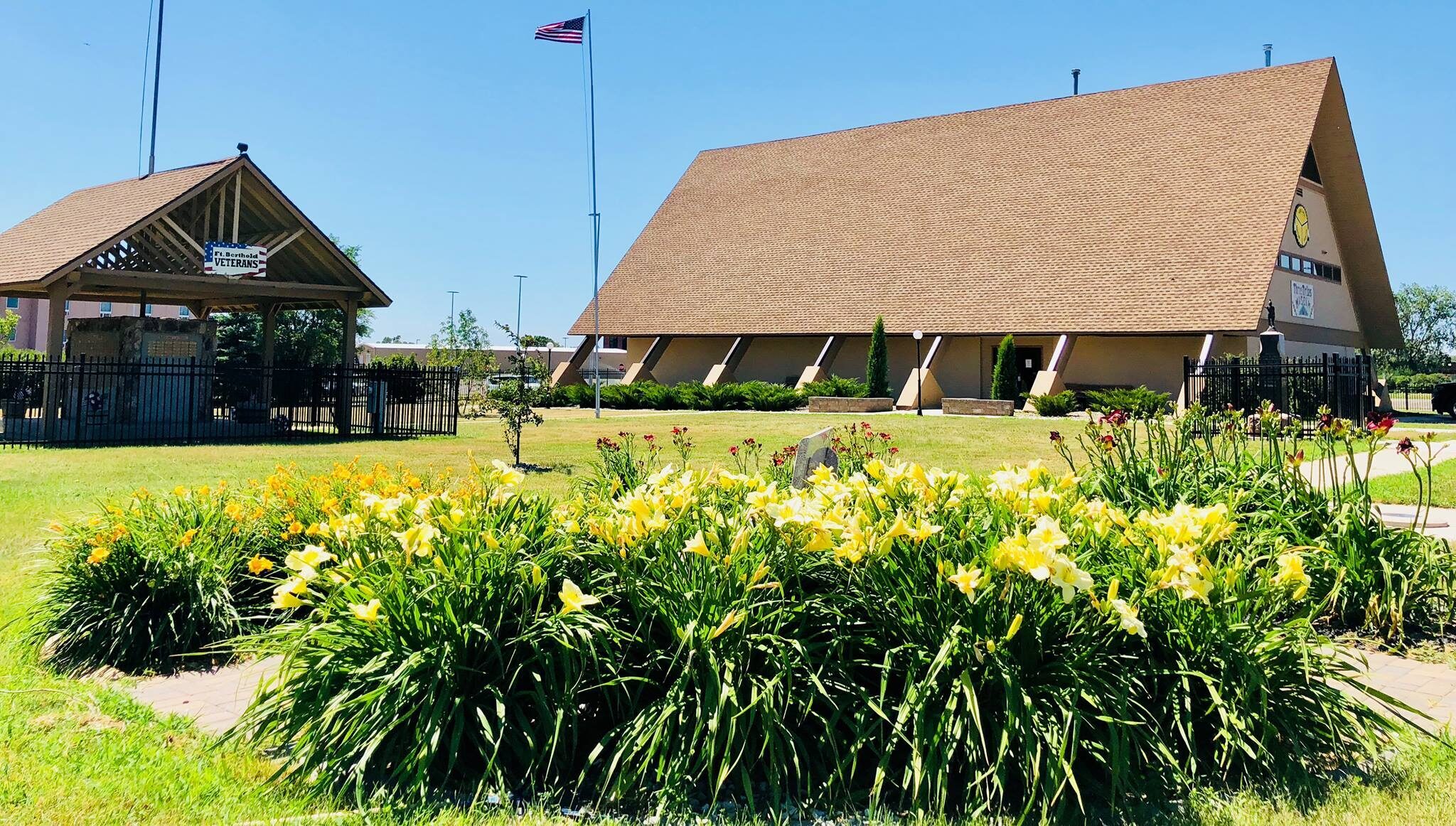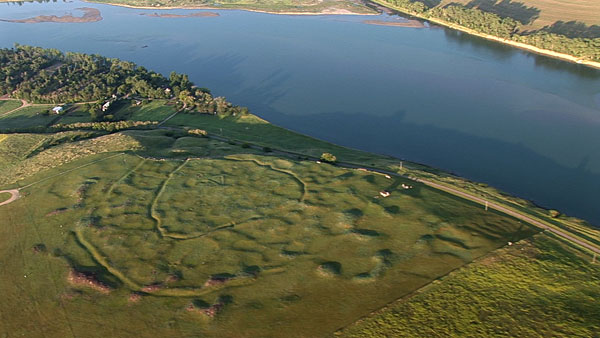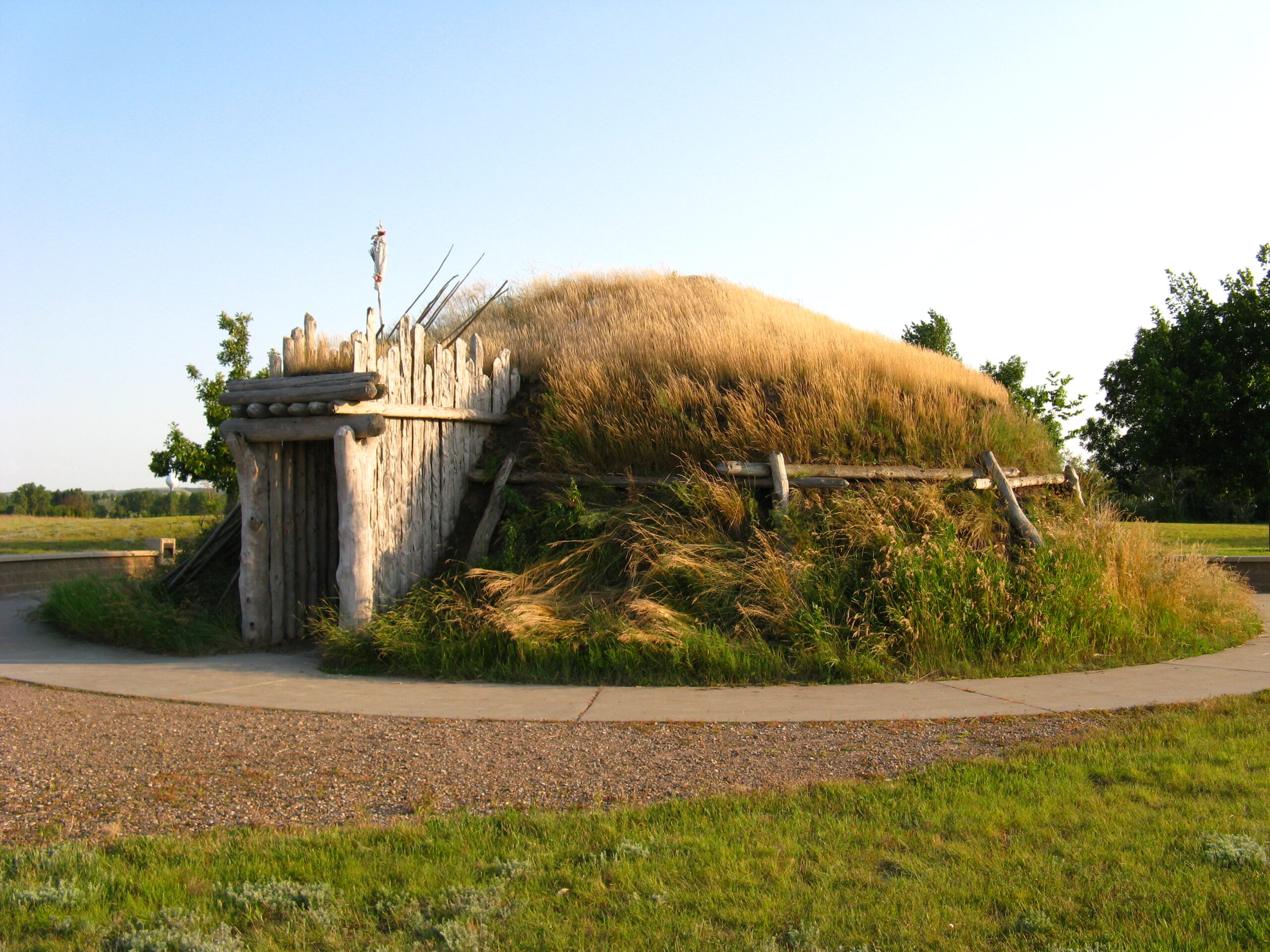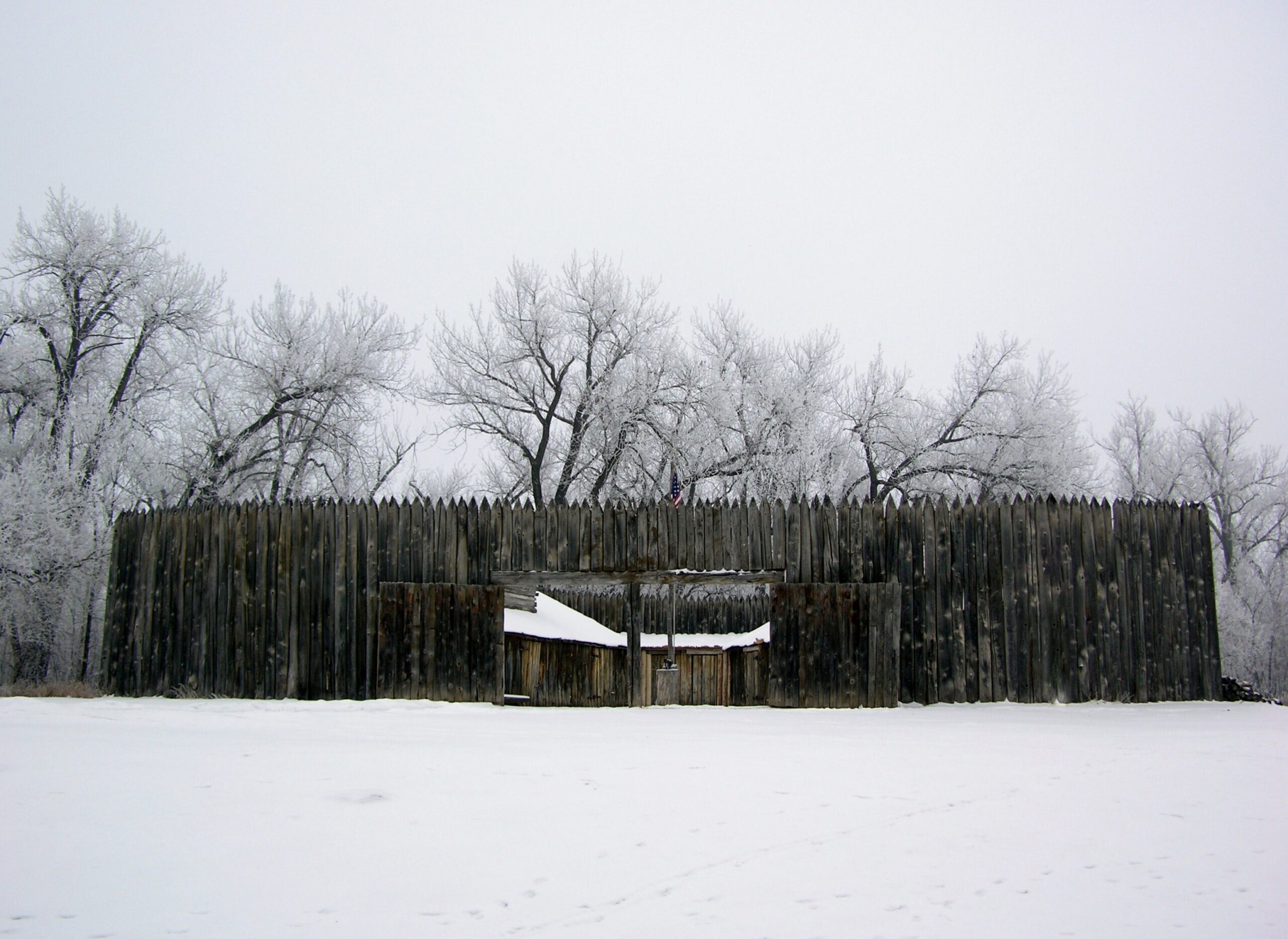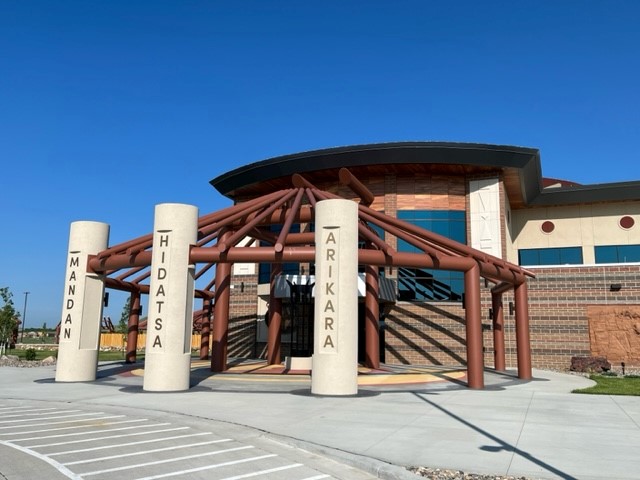
By Catharine Li
In Nuu’etaa, words are rich with symbolism that imparts life into the Indigenous oral storytelling tradition. For Bheri Hallam, teaching this language of the Mandan people is a matter of preservation—and a celebration of what endures from ancestral heritage lost, recovered, and resilient as ever.
Hallam, who has served as a Mandan Language Apprentice at the Mandan, Hidatsa, and Arikara (MHA) Nation Language and Culture Department for two years, is one of few remaining Nuu’etaa speakers between the Twin Buttes, Mandaree and New Town areas of North Dakota. Within this role, she is working to attain fluency while leading Nuu’etaa language initiatives for the Fort Berthold Indian Reservation.
“I always knew I wanted to help in some way when it came to the language,” Hallam said. “But not everyone has that mindset.”
Acutely aware of the challenges associated with teaching, Hallam drew attention to the limited network of scholars working in Siouan languages. As such, the diminishing Nuu’etaa language, like the fate of many other endangered languages, is rooted in a lack of resources.
According to Hallam, understanding the complex relationship between language and culture requires perspective through a generational lens.
Under federal assimilation policies of the late 1880s, hundreds of thousands of American Indian, Alaska Native, and Native Hawaiian children were forcibly removed from their communities and placed in boarding schools across the country. After arriving, many Native American children were often barred from speaking their Indigenous languages and practicing tribal traditions.
“There’s a lot of [tribal] elders who are [from] that boarding school era, and they have such tragic stories,” she said. “If you want to learn the language, you’re going to come across that. You’re going to learn about the history.”
Pointing to the cascading impacts of enforced English use in the boarding school system, Hallam explained how Indigenous languages were effectively suppressed within familial lines as well. Direct descendants of boarding school children gradually lost touch with their heritage tongues. Others wouldn’t teach their children so they wouldn’t suffer the harsh discipline they received. The disconnect was amplified by intergenerational trauma.
“If your parents wouldn’t teach that main language that they had, then where do you get that from elsewhere?” she asked. “It really started decreasing not out of a [lack of] interest, but more of a [lack of] people who were able to teach.”
After the death of longtime Native American educator Edwin Benson in 2016, the Nuu’etaa language lost its last fluent native speaker. Benson was one of Hallam’s Nuu’etaa teachers, also hailing from Twin Buttes. While committed to spreading Benson’s insights to a wider audience, Hallam was also committed to her own learning and growth.
There are people who know [Nuu’etaa], but they just don’t know how to share it,” she said. I want to be able to help as much as I can. [And] dedicate my time to benefit the community however I can.
– Bheri Hallam
Whether hosting weekly Mandan language classes at the MHA Interpretive Center in New Town or planning outreach projects, Hallam found strength in building a more robust knowledge base for tribal members to interact with.
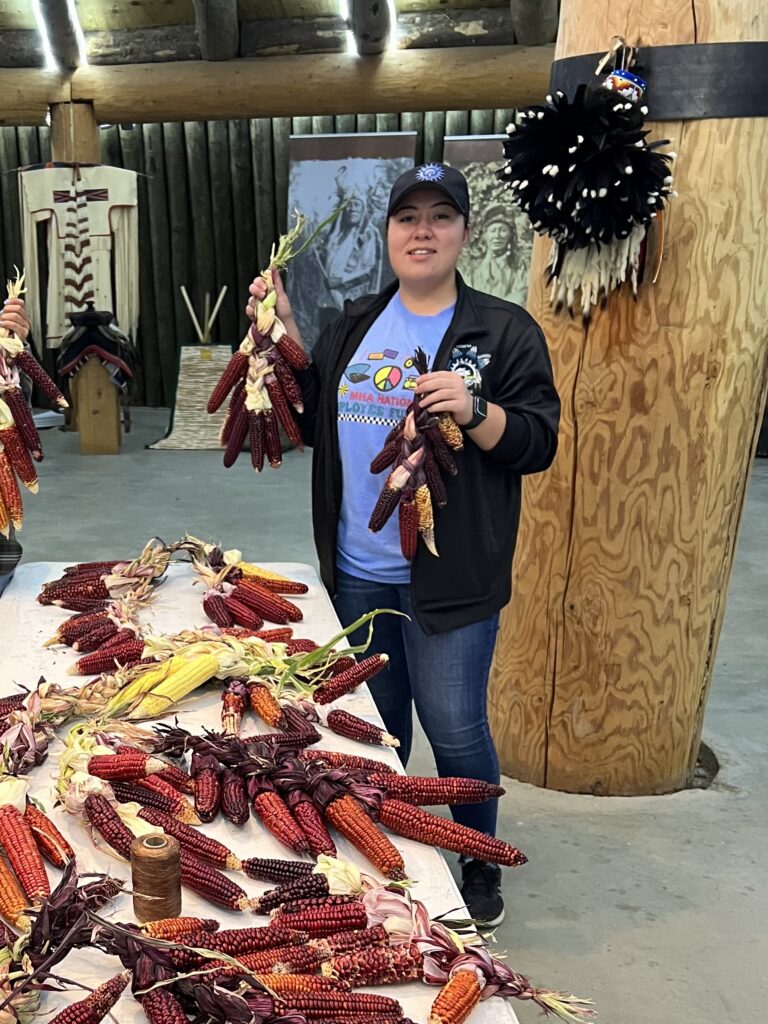
Although changes in class turnout occurred across different age groups, the transition from youth attendance in the early days to greater elder participation — and now, more young adults did not deter her.
Employing this flexible mindset guided her to cultivate a nurturing learning environment for predominantly beginner learners. Amongst the Nuu’etaa speakers with existing skills, Hallam embraced open dialogue to help facilitate the exchange of ideas and perspectives.
“There’s a lot of aspects you can go to,” she said. “You don’t have to always be [in] a teacher setting. You can be a friend or a peer.”
The three languages associated with the MHA Nation are now available as classes: Mandan and Hidatsa at the New Town Interpretive Center and Sahnish courses at the White Shield Community Center. Additionally, teachers from the MHA Language and Culture Department host Hidatsa classes for elementary and high school students in New Town.
An inherently collaborative teaching model is built around increasing familiarity with Nuu’etaa words through repetition and group practice. In a small tight-knit learning community, simply being exposed to the language serves as the baseline for cultural immersion. Hallam strives to increase engagement opportunities for people at all levels of Nuu’etaa proficiency.
“We try to make it open to all,” she said, adding, “people say ‘it starts with the kids and it starts with the parents.’”
Here where history, language, and culture are intertwined, Hallam flourishes alongside her students. Pursuing teaching is as much a passion as it is a deeply personal fight to keep Nuu’etaa, and memories of her grandmother alive.
“When my grandma passed away, I got to see some of the things that I never really looked at before,” she said. “It was like I wanted to know it all. She was in her sixties, still trying to learn [the language] herself. I was learning with her at the time, but I didn’t realize how much she wanted it.”
Reckoning with grief through action, Hallam remained focused on the scope of her ambitions. She also reinforced her cultural identity by mobilizing her language expertise to engage the community.
“You have challenges and it’s there,” she said. “You see it, but you choose how to go about it in the end. Some people can hold onto that sadness but I try to make it something positive.”
As Hallam continues to protect the linguistic history of the MHA Nation, she is optimistic about the path forward for a new, vibrant community of Nuu’etaa speakers.
“I hope that even if I don’t become fluent, I can help produce the next generation [of Nuu’etaa speakers]” she said. “Maybe we can have a fluent speaker come up because of the work that I’ve helped do.”

